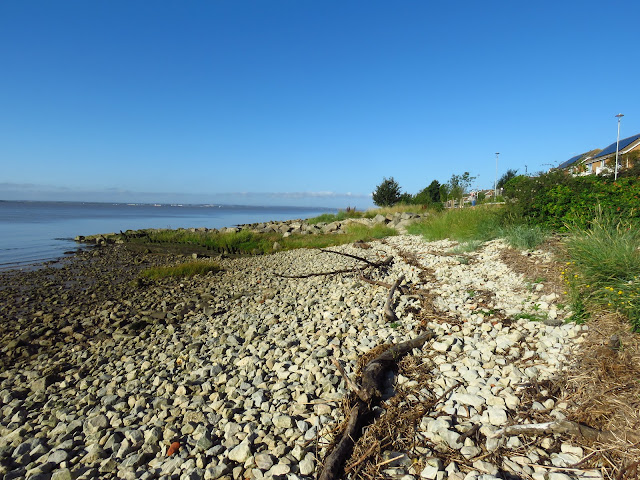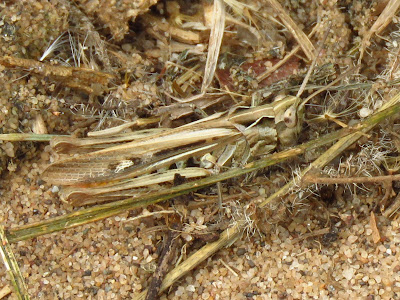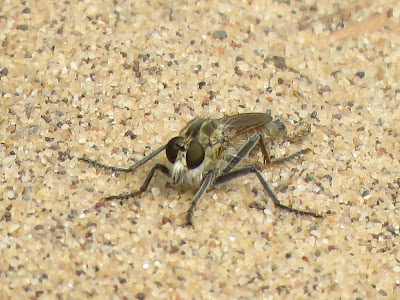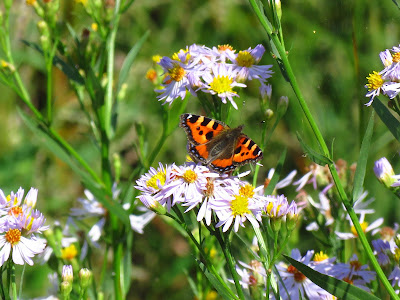 A sunny morning, I drive to Corinthians way for a second walk along the Humber front, in search of Sea Aster bees. The tide is almost high and there are no curlews on the Humber. It's less than two weeks since my last visit but there is a very different feel.
A sunny morning, I drive to Corinthians way for a second walk along the Humber front, in search of Sea Aster bees. The tide is almost high and there are no curlews on the Humber. It's less than two weeks since my last visit but there is a very different feel.

I have roughly mapped the location of saltmarsh with sea aster in the Humber and river Hull. Sea Aster also grows on the sea wall.
I stop by the little shingle beach to search the sea aster, which grows plentifully on one of the barges. It is buzzing with insects: butterflies, hoverflies, honeybees and a bumblebee.
Small Tortoiseshell.
Small White.
Buff-tailed bumblebee.
Dronefly eristalis.
A hoverfly to ID.
Common field grasshopper.
I move to the saltmarsh on the half-tide basin. The young Lesser black-back gull is still there, begging.
The Sea Aster is in full bloom. House Martins hunt over it.
Two young goldfinches land on the sea wall and then fly to the marsh in search of seeds.
This one feeds on Sea Plantain seeds, the other on the wall itself.
The young moorhens are resting on the plants on the dock. A Woodpigeon tries to alight on the water, probably to drink. It actually lands briefly, soakes its belly feathers and returns to a perch. A small ramp would help birds bathe and drink. There are plenty of full grown sticklebacks.
I look for, and find some clumps of tree mallow, which have survived the flood defence works, but still a bit small to flower.
The sea wall by The Deep is well vegetated.
Now I move onto the river Hull. It is high tide. I search the sea aster south of Scale Lane bridge.
Honeybees and droneflies
The Redshank roost is in a new place today, on the ropes by the barge next to the buoy shed. I count 16.
On the way back I do a butterfly count by Myton bridge. A Holly Blue feeds on Amphibious bistort.
Blackbird sunbathing.
Small Tortoiseshell on sea aster.
One of two Migrant hawkers by The Deep.
I return and decide to do a 10 min beach clean at Corinthians way. I fill two bags, mainly of drink cans and plastic bottles. A take away container has some dead sandhoppers, they jump, but not very high, so they couldn't escape.
A drinks bottle also had a decomposing sludge made of sandhoppers. Fortunately, I don't have to take the smelly litter home as there are bins nearby. Still, no aster bees in Hull, but a lovely walk by the Humber.
Two plastic bags full of litter and a cleaner beach.

























































